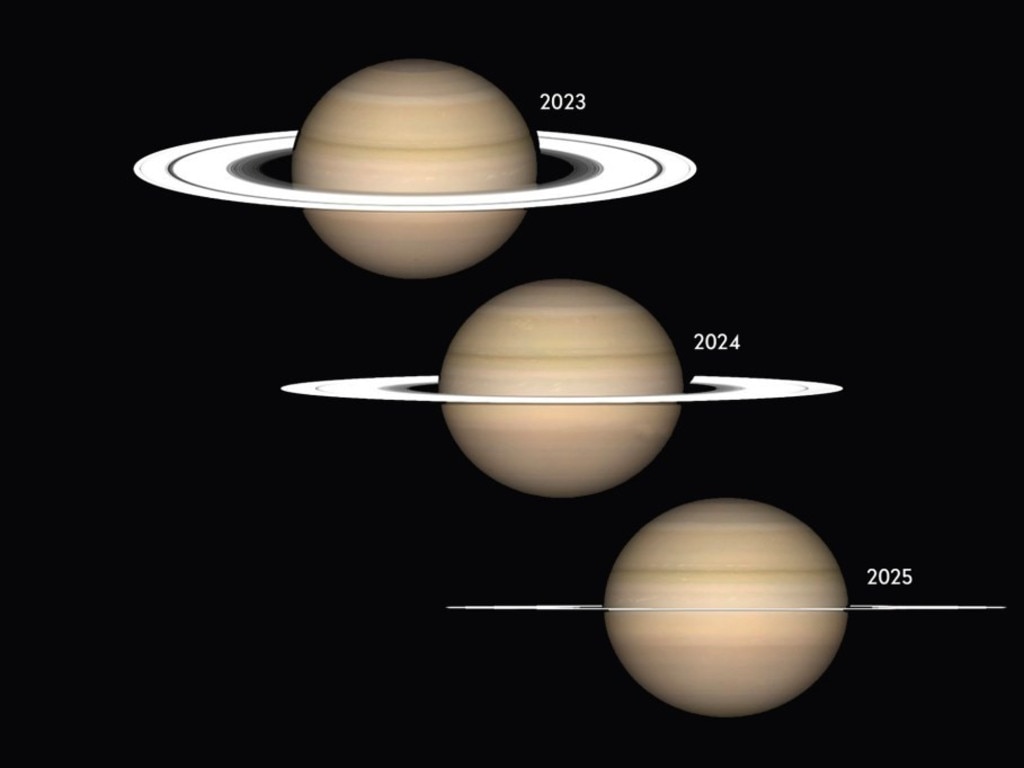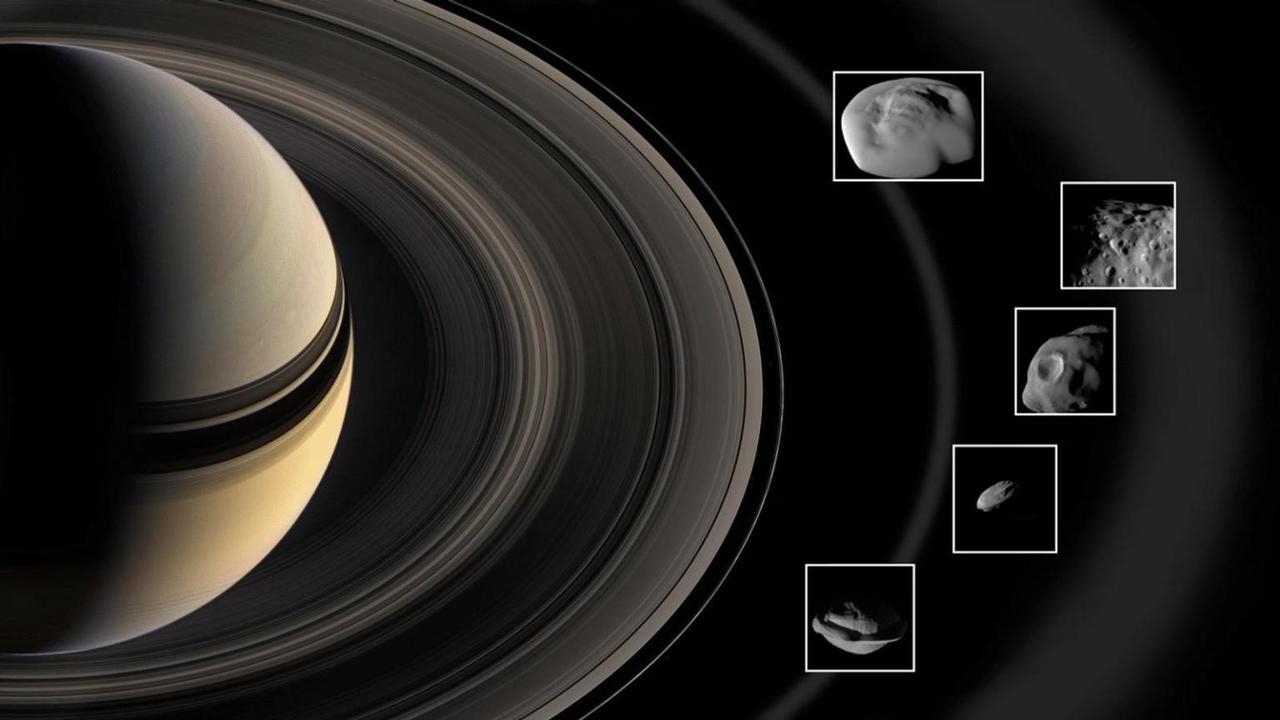Stargazers should enjoy Saturn’s rings while they last as NASA confirms the planet’s hoops will vanish from view in 18 months.

Stargazers should enjoy Saturn’s rings while they can.
NASA reports that the gas planet’s signature interstellar hula hoops are going to vanish from view in 18 months — but thankfully it’s just an optical illusion.
Come March 2025, the New York Post reports, Saturn’s iconic rings — which extend from approximately 70,000 to 140,000 kilometres, or the equivalent of 30 Earths — will be rendered invisible from our terrestrial perspective due to the planet’s tilt within its axis of orbit.

Due to a tilt in the planet’s axis of orbit, earth sees the planet from the side for a short period every 13.5 to 15.7 years. Picture: NASA
Every 13.5 to 15.7 years, Earth sees Saturn on a perfectly horizontal plane, causing the bands of cosmic dust to seemingly disappear from our far-flung view.
That’s because, despite the rings’ vastness, they measure as thin as 91 metres in most places — which is nothing considering that Saturn is a staggering 1.2 billion kilometres from Earth.
The adorned planet’s tilt is currently angled downward at 9 degrees and will decrease to a barely perceptible 3.7 degrees come 2024.
When this angle hits zero in March 2025, spotting these celestial circles will be akin to seeing “a sheet of paper edge-on when it’s positioned at the far end of a soccer field,” according to Earth.com.
Thankfully, we won’t have to wait long for the ring’s return. The sixth rock from the Sun will rotate again, showcasing the other side of its hoops, with a peak display occurring in 2032 when the angle of tilt hits 27 degrees.

NASA reports that the gas planet’s signature interstellar hula hoops are going to vanish from view in 18 months – but thankfully, it’s just an optical illusion. Picture: AFP/Getty Images
Meanwhile, the next time we see Saturn from its side will be on October 15, 2038.
In fact, this time the celestial side-eye will happen three times in comparatively quick succession with the next two events afterwards occurring on April 1 and July 9, 2039, respectively — an intergalactic hat trick if you will.

Saturn has seven distinct rings, which are comprised of ice, rocky debris, and dust.
They’re believed to be the remnants of comets, asteroids, and moons that were rent asunder by the planet’s powerful gravitational pull.
Unfortunately, these celestial bracelets could soon disappear for good and not just due to an orbital illusion.
Scientists claim that Saturn’s rings could vanish in as little as 300 million years — a blip on the cosmic timescale.